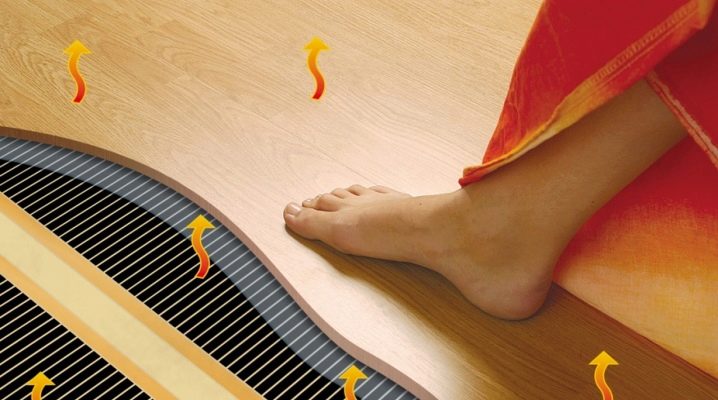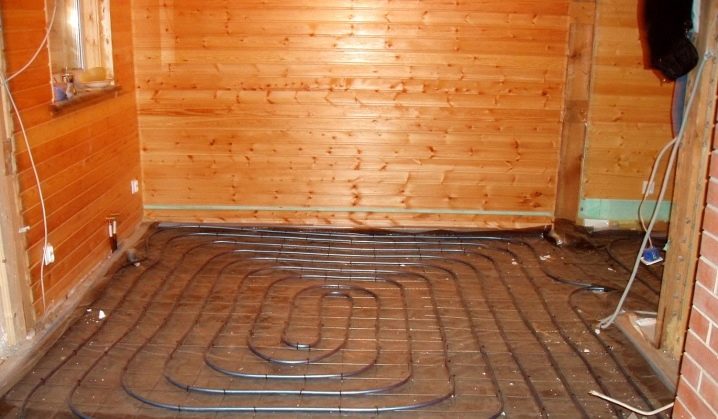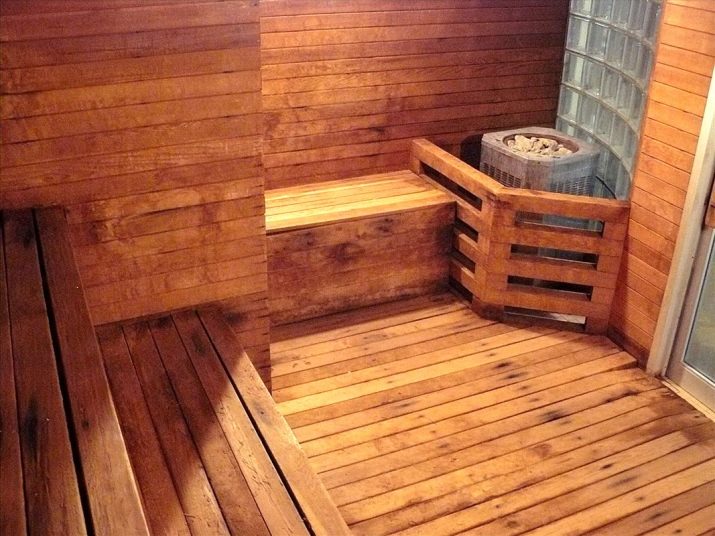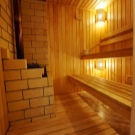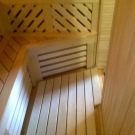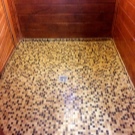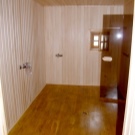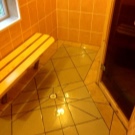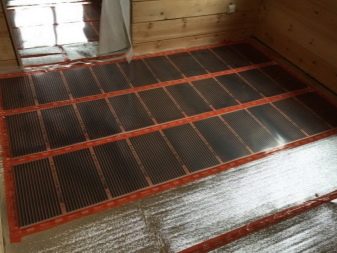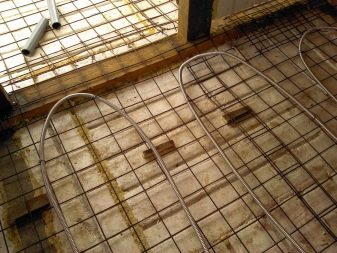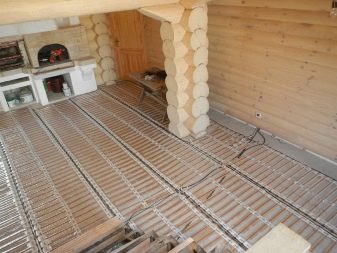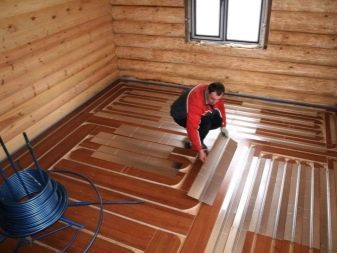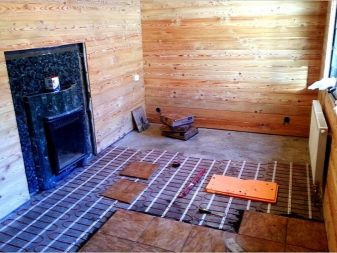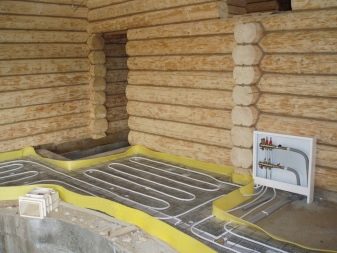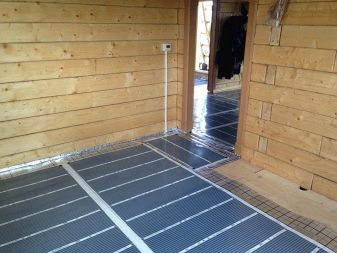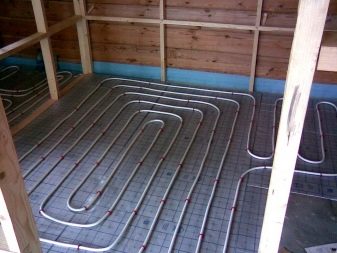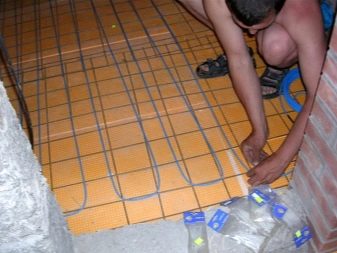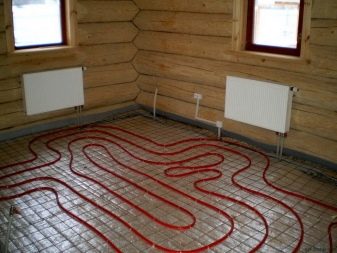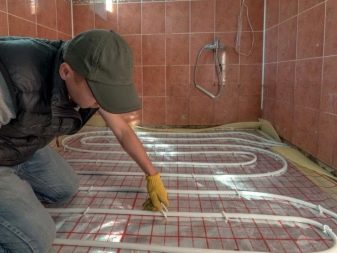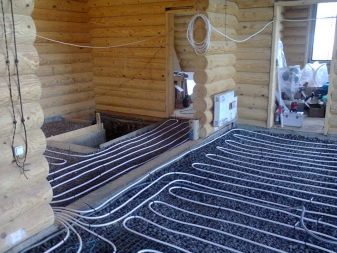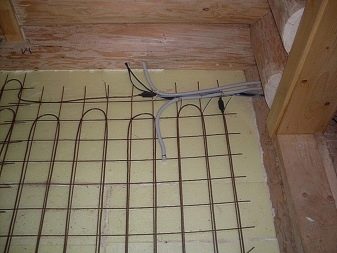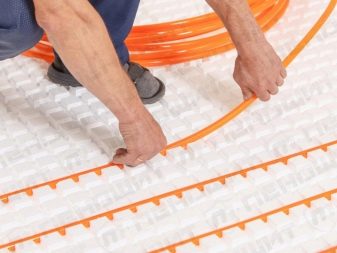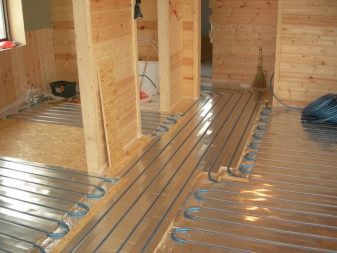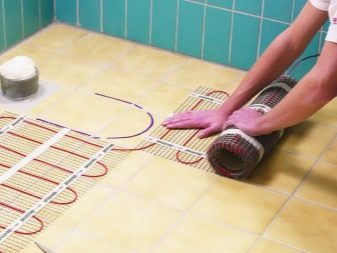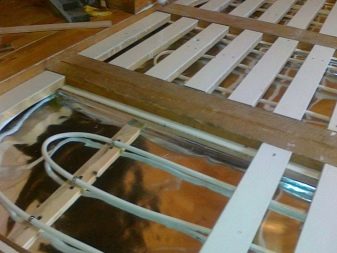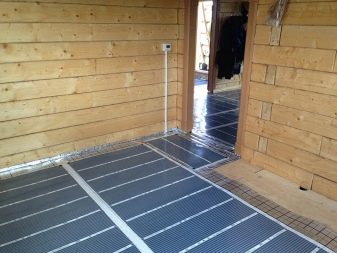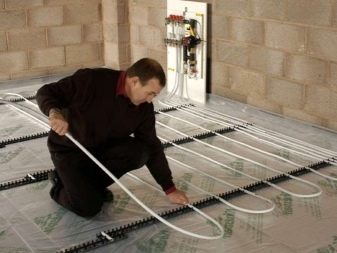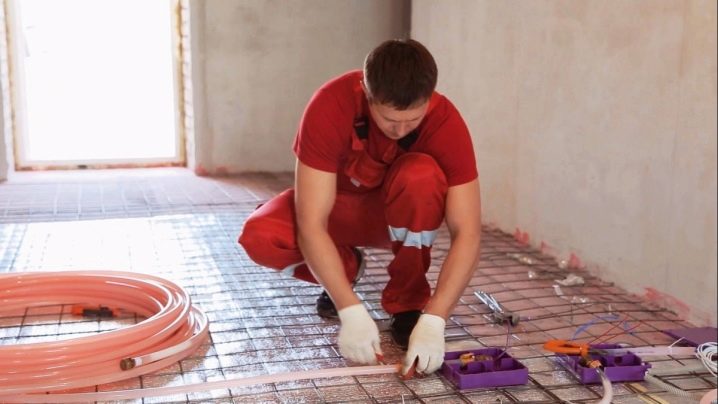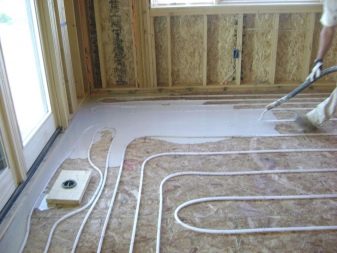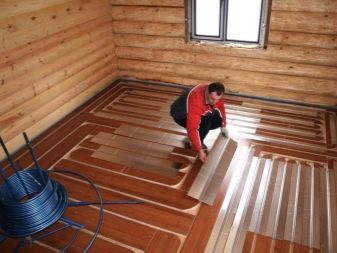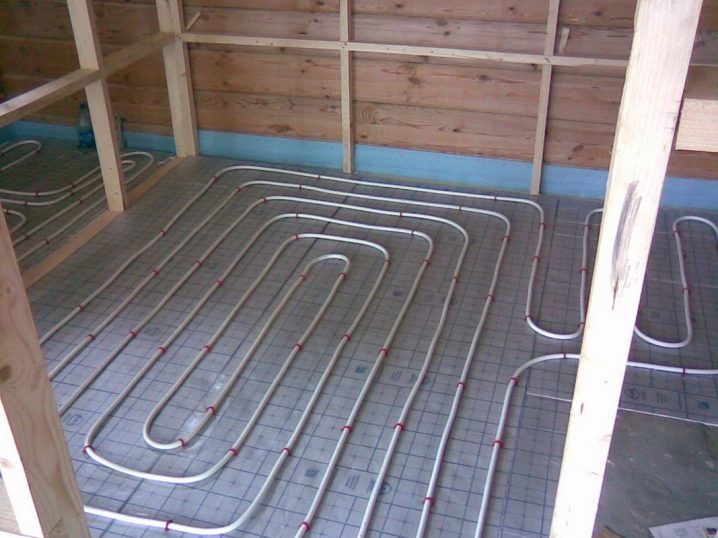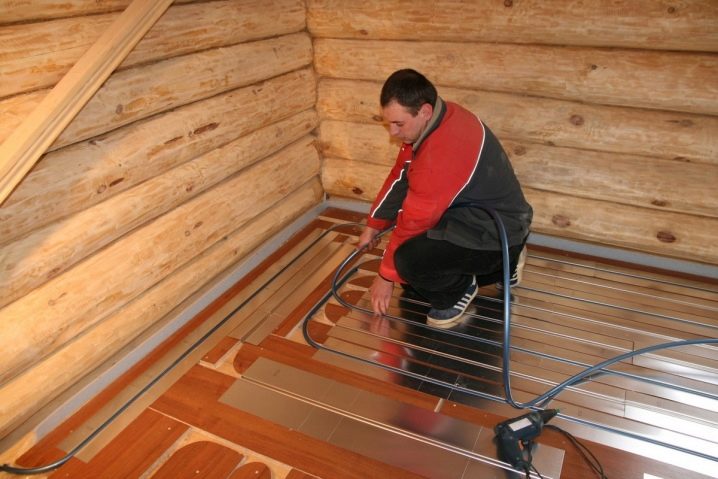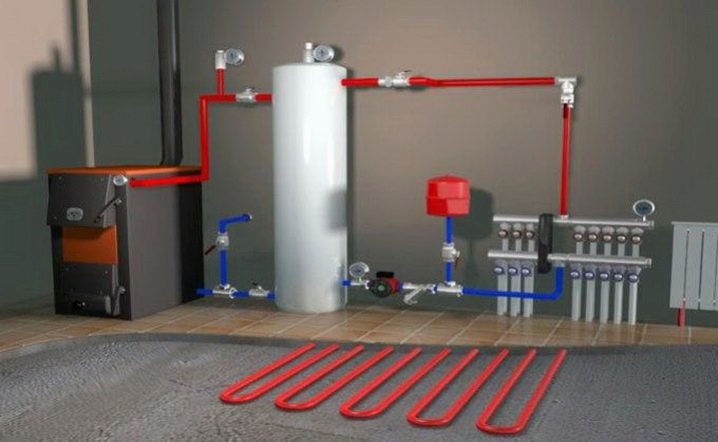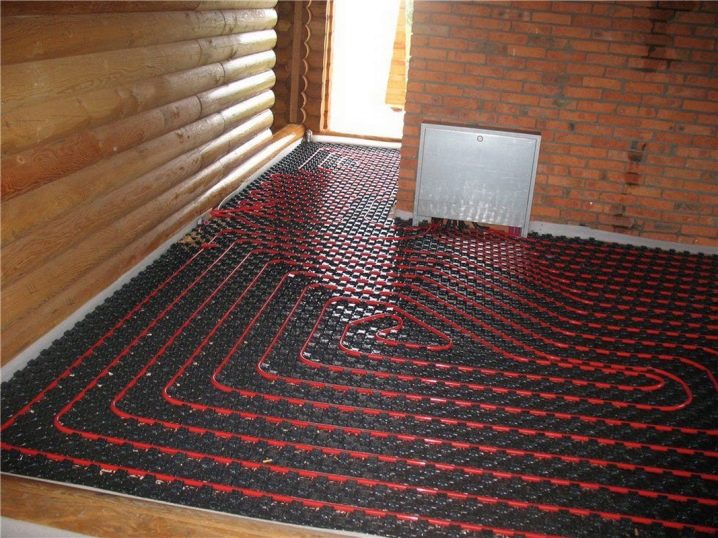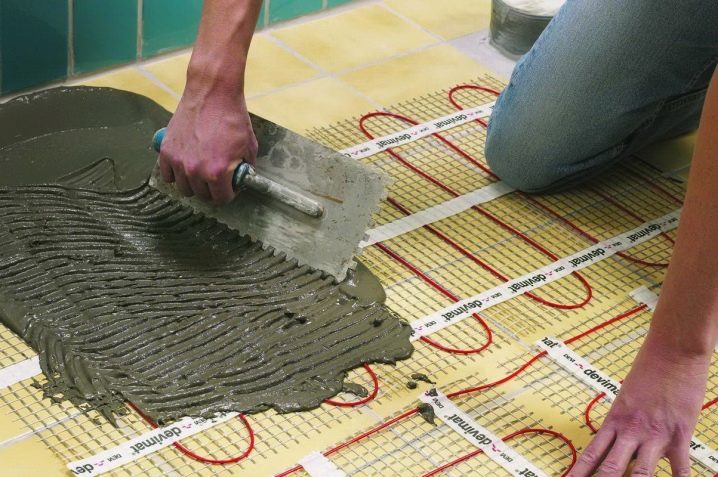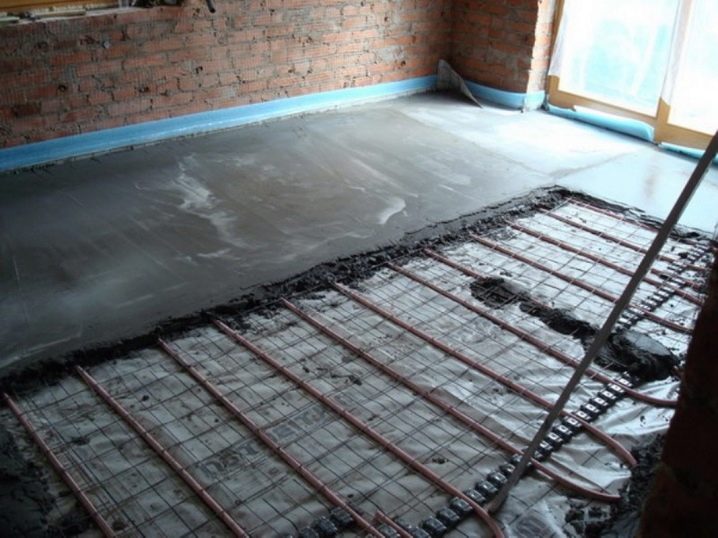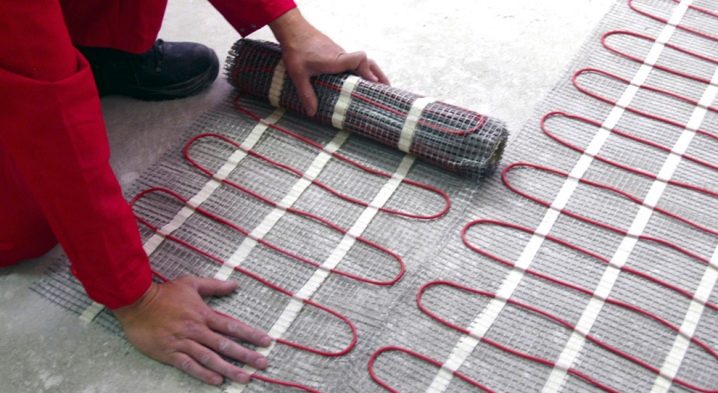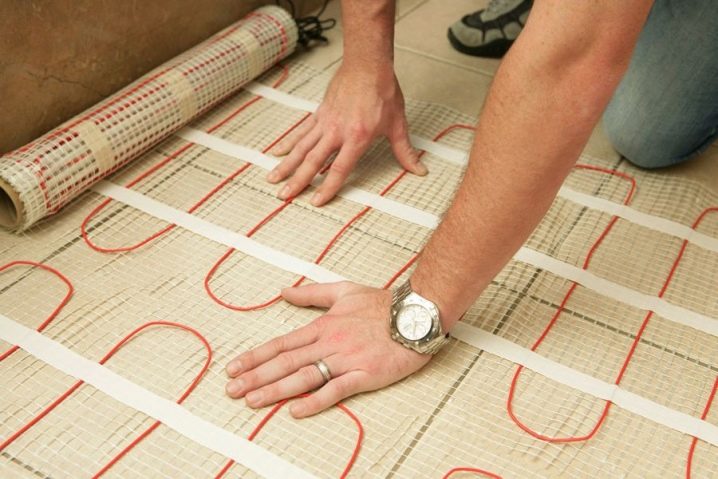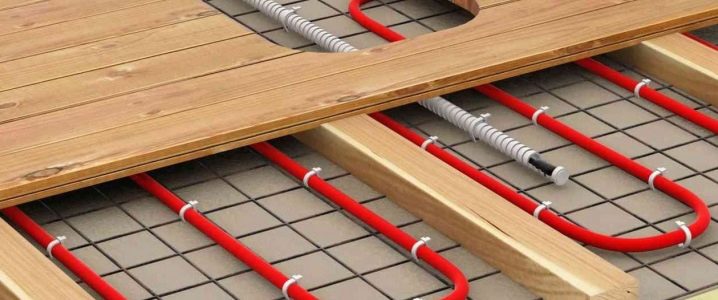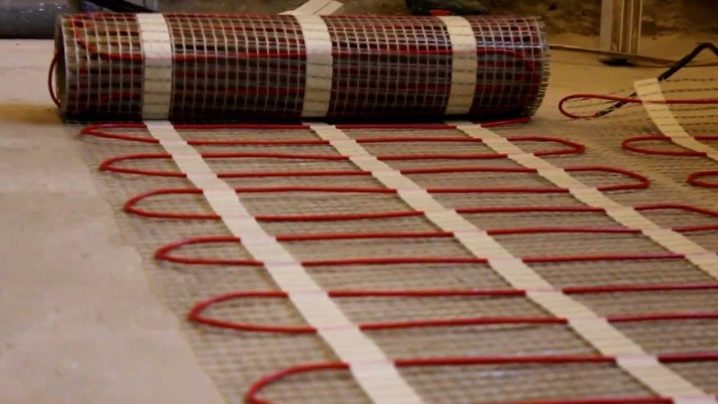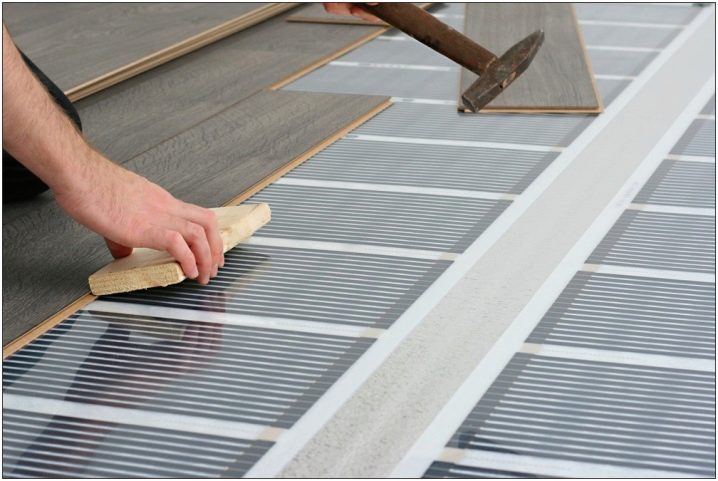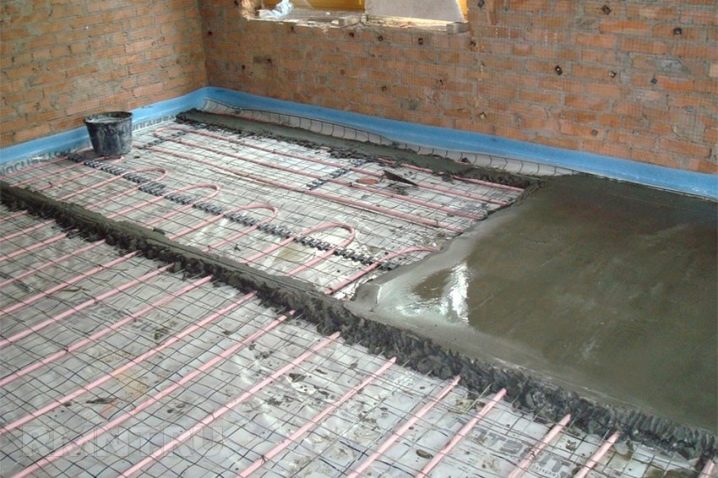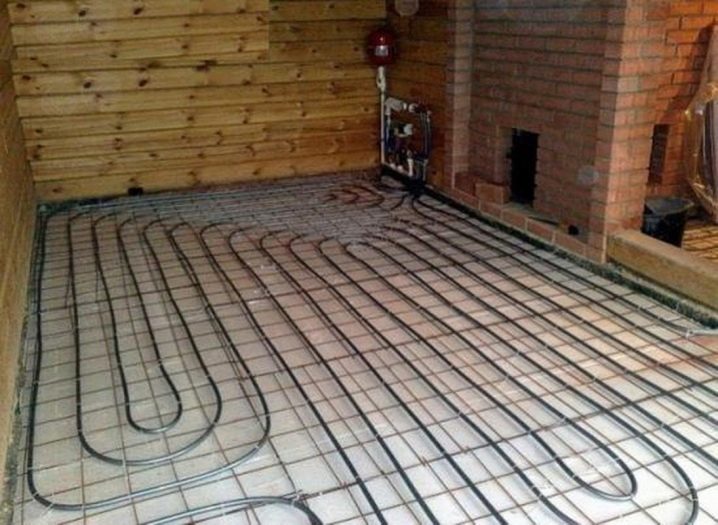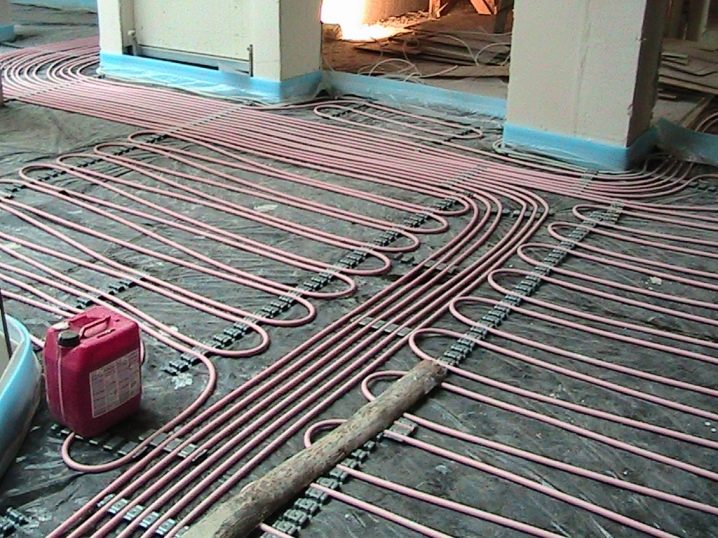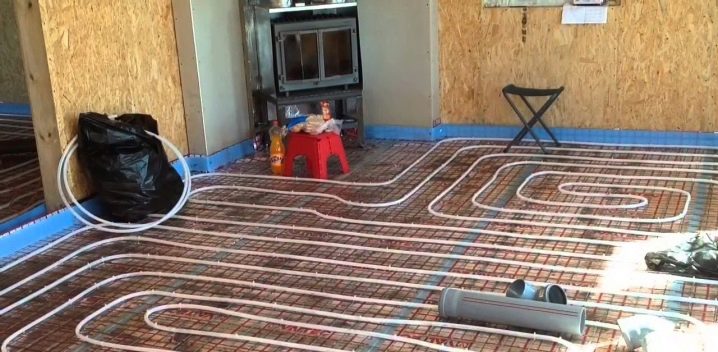Heated floor in the bath: the criteria for choosing a design
To make the bath more comfortable and convenient, you can use such a great addition as a warm floor. Heating elements will lead to the fact that the air in the room will dry out relatively quickly, so that the finishing materials and structural elements will last much longer. It should be noted that the installation of a heated floor is a rather complicated procedure.
To properly install such a system, you need to know the features of its device. In this case, the installation of such an addition is an expensive pleasure, so when choosing, it is worth considering the financial side.
Special features
The bath is a very specific room in which high temperatures and high humidity are concentrated. Collection or discharge of water in this room is carried out over the entire surface of the floor. This adds certain flooring requirements. It is necessary to give preference to natural wood, in some cases it is allowed to use tile.At the same time the tree is a good heat insulator.
If you decide to install a warm floor in the bath, then you should take into account that this process is a multi-faceted task. You have several options for translating this idea into reality.
Shared floor heating is the most expensive option. In this situation, over the entire area of the floor excluding the steam chamber, it is necessary to lay the heat exchanger circuit in accordance with all safety regulations. Be sure to use insulation. A coupler is poured on top of this contour, which provides for a certain slope for the discharge of water. Then ceramic tiles can be laid on this surface.
The advantage of the presented method is that there is no differentiation of the premises during the construction period. All processes are carried out uniformly.
The list of shortcomings is very long.
- Such a floor requires a large financial outlay.
- Tiled floors that have a slope, especially in the wet state, will be traumatic.
- There is a strong inertia of the system. To warm up the screed, it takes more time than to warm up the steam room.
- If you do not use the system regularly, in winter it can be damaged by cold.
- It is required to select a separate corner in order to accommodate the heating system and control of the warm coating.
The presented information suggests that this option is optimal for public and corporate baths, but not in private housing construction.
Differentiated method, where it is necessary to create two systems that will function independently of each other. One will be engaged in heating the floor in the dressing room, and the second in the washing compartment. Such a floor allows you to solve problems of different levels of complexity. For example, infrared underfloor heating is the best option for a dressing room, since the humidity in this room is much lower than the washroom. When it comes to the organization of warm floors in the bath itself, there are certain difficulties:
- clay and wood have the same thermal conductivity, therefore they are a good heat insulator;
- tiled floors need a special approach for arranging sewage in the bath.
Advantages and disadvantages
The main advantages of the warm floor system are the following:
- the room is heated to the required temperature by means of radiation or water, which provides a certain comfort during use, since the air in the head area will not be as hot as that of the feet;
- due to the lack of conversion, dust does not circulate around the room;
- indoors there will be no fungus or dampness;
- humidity will meet the requirements;
- easy care;
- there is no possibility of getting burned, as this is an extremely safe system;
- heat transfer can be independently regulated;
- the possibility of saving space, because the equipment is located below the floor surface;
- can be combined with another heating system;
- statistics show a decrease in energy costs up to 25%;
- ecological clean materials;
- the lifetime is long, depends mainly on the pipes that were used to create the system.
The heat-insulated floor in a bath generally has only positive responses. As disadvantages of the presented design, it is important to highlight the high labor and financial costs.
It is recommended that the installation of a heated floor should be carried out by qualified specialists, since without the required knowledge, it is very easy to make a mistake that will affect the future operation of the system.
Kinds
Heating systems for the floor of the bath should be divided into two main types:
- Water variant. The presented design includes a closed loop, the pipes of which will move the thermal medium. For the implementation of such circulation using special pumps. Most often, water serves as a typical carrier, however, there are cases when, instead of it, there is antifreeze, a solution of it or ethylene glycol in the pipes.
- Electric modelspowered by electricity. Usually in this case, use factory electric floors or infrared mats.
Each of the presented systems has its own specific advantages and disadvantages. For example, the water floor will cost more than the electrical system, however, the costs will be compensated in a few years. Electric underfloor heating is cheaper, but they need high energy consumption.
With regard to the independent creation of these floors, in this matter lead electrical structures that are easier to make with your own hands. In a water-heated situation, competent design and accurate preliminary calculations are required. In this case, the water structure does not allow to find the damaged area during leakage. It will be necessary to dismantle the entire screed, which is especially problematic when it comes to large rooms.
You can mount a heated floor from the stove or use for this purpose, for example, an electric air boiler. For the furnace and electric boiler it is necessary to take care of high-quality insulation with reliable materials. It is desirable that the design stood on screw piles, and the floor was made of concrete.
How to choose?
When choosing a warm floor, you should pay attention to the following criteria:
- The specific power of a warm floor should exceed 110 watts per square meter.
- Models supplemented by a stabilizer have a certain advantage, as this will protect against power surges.
- If you decide to install an electric floor in the bath, the installation should be carried out on the free area of the room.
- The choice of thermostat depends on your individual needs. It can be programmable, manual, have a separate power switch and more.
Installation
There are various methods of installing underfloor heating in the bath, which are characterized by the general rules of installation and certain features. Need to know the step by step guide. Almost all floor heating systems must be laid on the insulating material, and then covered with a tie on which the floor covering is laid.
Experts advise in addition to thermal insulation to use waterproofing, which will prevent power surges.
In addition, waterproofing acts as an obstacle to the formation of condensate in the construction consisting of several layers. As a similar layer may be mineral wool, expanded clay, thick plastic film and more. Consider the installation of various systems.
Electric floor heating with cable
Visually, this cable can not be distinguished from ordinary wires. The difference lies solely in the functional purpose.A heating cable can convert electrical energy into heat. Such a system is characterized by the presence of a thermostat, thanks to which you will be able to regulate the power and speed of reaching the required temperature.
In addition, manufacturers usually provide temperature sensors, thanks to which you can monitor the operation of the cable system.
It should be noted that the electrical cable used in underfloor heating can be single-core or two-core. The first option is characterized by large electromagnetic radiation, however, it is still in the normal range. The second option is characterized by simplicity of calculation, since it does not need to bring the two ends to the thermostat, since one is enough.
If the cable floor will be laid on the surface of wood, then you need to take care of security. Wood must be treated with fire retardants, despite the fact that there is no direct contact between the wire and the floor covering.
Before installation, it is important to carefully check the cable, joints and connections.
For those who wish to equip a bath with an electric floor heating, manufacturers provide various accessories that will be useful during installation. As these devices are special guides, supplemented by fasteners, and mounting grid. With the help of guides you can place the cable at an optimal distance from each other. It is important that there is at least 5 cm distance from the cable on the wall, and at least 10 cm from other heating devices.
Film warm floor
This is the cheapest and fastest installation option. Here the film is produced in special rolls. All you have to do is to spread the mat on the floor, fasten the strips with adhesive tape or some other simple method. It does not require a cement screed, which takes a lot of time. In this situation, the infrared mats are poured with tile glue on which the tile is directly laid. In some cases, the coating is laid directly on the mats.
Presented floors are characterized by excellent tightness and safety. A definite plus is that it can be used with wooden floors.Such a floor is heated to a maximum of 45 degrees, which does not violate the structure of the floor covering. On the implementation of all the required work you will need a maximum of 5 days.
Water floor
It can be installed in various ways. The choice of one or another option is influenced by the preference of the owner of the bath and the technical characteristics of the floor covering. The most common are two installation methods.
- Concrete type, which is similar to installing an electric floor heating. The only difference is that the pipes are thicker.
- Flooring method that is particularly popular because it does not overload the flooring.
Installing a heated floor with a concrete screed is the most common option, the only disadvantage of which is that it needs a fairly large amount of time. In this case, you can not be afraid of overheating, so this way of laying is chosen quite often. Note that it is not recommended to install pipes close to each other. The optimal distance between them is 30 cm.
This case does not provide for bends and kinks.Pipelines should be fastened with clamps and dowels. In some cases, used wire. The presented method involves conducting the pipeline in a spiral or snake. This option is not very difficult to build.
It is necessary to begin to do a design in soil. Next, pour and put all the necessary material.
Tips
Installing a heated floor in the bath provides convenience and comfort in this room. To achieve the maximum effect is possible only if you choose and install the system correctly. It is important that all rules are followed, especially as regards safety. Installation is extremely difficult if you do not have the proper skills and experience in this area. This is especially true when you prefer a water-heated floor, because here you need to properly connect the pump and other products that ensure the correct operation of the system.
When it comes to the installation of electric underfloor heating, some thoroughness is required here and waterproofing is absolutely necessary. For the effective functioning of such a system and security,It is important to pay special attention to studying the instructions of a particular manufacturer, since each warm floor is characterized by features. In this case, manufacturers usually give specific recommendations for installation.
How to make a warm floor in the bath, see the following video.
